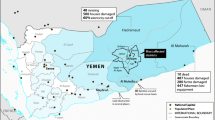Abstract
Based on the physiographical features of the studied watershed of 102.5 km2 in northern Ontario and the meteorological data of one nearby climatic station, through the combination of the regionalization of flood and the HEC-1 modeling, this article presents an approach that may be used to determine the desired peak flows for the ungauged watershed. The empirical equations used to determine the desired peak flows were developed by the Cumming Cockburn Ltd. (CCL) who has carried out the studies on flood regionalization by using flow data at 380 gauging stations in Ontario. CCL has proposed four methods to estimate peak flows, namely 1) regression method describing multiple linear relationships between flood flow and related parameters; 2) index flood frequency curve; 3) regional flood frequency curve and 4) isoline map for unit peak flow. The desired peak flows for studied watershed determined by CCL methods were used to calibrate the HEC-1 model for the rainfall-runoff simulation for this watershed which consists of 15 subwatersheds. Through slight adjustment in the CN number used in the HEC-1 model, the calibrated HEC-1 model could be used for rainfall-runoff simulation for this ungauged watershed. This approach could be recommended for hydrological design and watershed management for ungauged watersheds provided the analyses of flood regionalization could be conducted. In addition, comparing to the Bavaria forest region, Germany, some questions have been discussed in this article.
Similar content being viewed by others
References
Arnold, C. L. and Gibbons, C. J., 1996, ‘Impervious surface coverage: The emergence of a key environmental indicator’, J. Am. Planning Assoc. 62, 243–258.
Brigham Young University, 2002, Watershed Modeling System – WMS7.0 User Mannuals, Environmental Modeling Research Laboratory, Brigham Young University.
Chow, V. T., Maidment, D. R. and Mays, L. W., 1988, Applied Hydrology, McGraw-Hill Book Company.
Cumming Cockburn Ltd. (CCL), 1999, Flood Reginalization for Ontario, Ministry of Natural Resources.
Eaton, B., Church, M. and Ham, D., 2002, ‘Scaling and regionalization of flood flows in British Columbia, Canada’, Hydrol. Processes 16, 3245–3263.
Famiglietti, J. S. and Wood, E. F., 1994, ‘Multi-scale modeling of spatially variable water and energy balance processes’, Water Resourc. Res. 30, 3061–3078.
Franklin, J. F., 1992, ‘Scientific basis for new perspectives in forests and streams’, in R. J. Naiman (ed.), Watershed Management, Springer-Verlag, New York, pp. 25–72.
Moore, I. D. and Grayson, R. B., 1991, ‘Terrain based prediction of runoff with vector elevation data’, Water Resourc. Res. 27, 1177–1191.
Nemani, R., Pierce, L. L., Running, S. W. and Band, L. E., 1993, ‘Ecological processes at the watershed scale: Sensitivity to remotely sensed leaf area index estimates’, Int. J. Remote Sens. 14, 2519–2534.
Pandey, G. R., 1998, ‘Assessment of scaling behavior of regional floods’, J. Hydrol. Eng. 3, 169–173.
Ribeito, J. and Rousselle, J., 1996, ‘Robust simple scaling analysis of flood peak series’, Can. J. Civil Eng. 23, 1139–1145.
Roth, N. E., Allan, J. D. and Erickson, D. L., 1996, ‘Landscape influences on stream biotic integrity assessed at multiple scales’, Landscape Ecol. 11, 141–156.
Singh, V. P., 1995, ‘Watershed modeling’, in V. P. Singh (ed.), Computer Models of Watershed Hydrology, Water Resources Publications, Highlands Ranch, Colorado, pp. 1–22.
Spanner, M. A., Pierce, L. L., Peterson, D. L. and Running, S. W., 1990, ‘Remote sensing of temperate forest leaf area index: Influence of canopy closure, understory vegetation and background reflectance’, Int. J. Remote Sensing 11, 96–111.
Sui, J., 1998, Hochwasserabflüsse aus Regen und Schnee in Mittelgebirgs-Einzugs-gebieten am Beispiel von Nordbayern, Series Publications, No. 8, 191 pp., ISSN1433-4860, FG Wasserbau und Wasserwirtschaft, (Technische) Universität Kaiserslautern, Germany.
Wigmosta, M. S., Vail, L. W. and Lettenmier, D. P., 1994, ‘A distributed hydrology-vegetation model for complex terrain’, Water Resourc. Res. 30, 1665–1680.
Wood, E. F., Sivapalan, M., Beven, K. and Band, L., 1988, ‘Effects of spatial variability and scale with implications to hydrologic modeling’, J. Hydrol. 102, 29–47.
Author information
Authors and Affiliations
Corresponding author
Rights and permissions
About this article
Cite this article
Sui, J. Estimation of Design Flood Hydrograph for an Ungauged Watershed. Water Resour Manage 19, 813–830 (2005). https://doi.org/10.1007/s11269-005-6812-1
Received:
Accepted:
Issue Date:
DOI: https://doi.org/10.1007/s11269-005-6812-1




